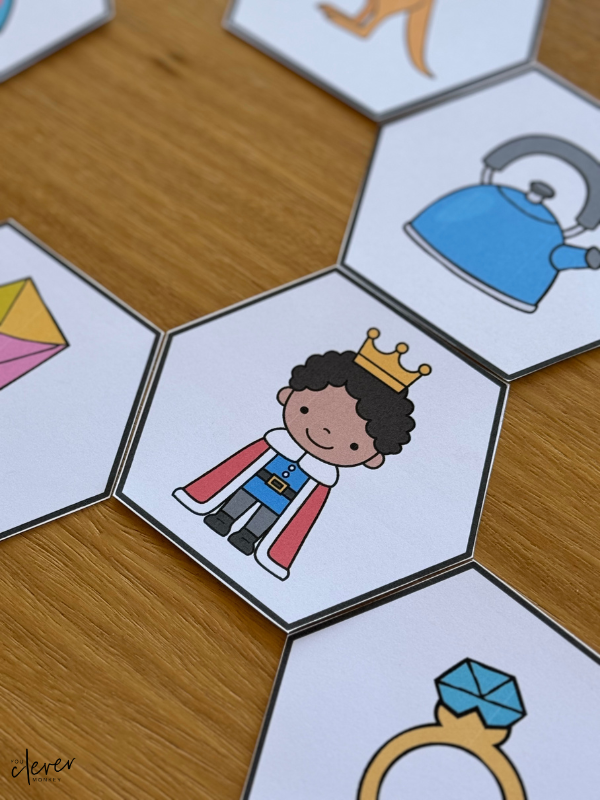
This logo isn't an ad or affiliate link. It's an organization that shares in our mission, and empowered the authors to share their insights in Byte form.
Rumie vets Bytes for compliance with our
Standards.
The organization is responsible for the completeness and reliability of the content.
Learn more
about how Rumie works with partners.
Want to make your class discussions more exciting?
Hexagonal thinking is a super fun and easy way to dive into topics, spark interesting conversations, and discover surprising connections between ideas.
Picture this: in history class, you could use hexagonal thinking to link events like the Industrial Revolution, new tech inventions, and labor laws, making it easier to see how everything ties together.
It’s perfect for any age or subject. It’s a great tool for teachers to break down tough topics and help students understand and retain concepts more easily.

What Is Hexagonal Thinking?
Hexagonal thinking is a visual method for organizing information. You write key ideas, quotes, or events on hexagons. Students then arrange the hexagons based on the connections they see. When the hexagons are all arranged, a discussion begins where students explain why they chose this layout.
The video below demonstrates an example of how hexagonal thinking works in class:
4 Easy Steps to Get Started
 Infographic created by Taisiia Konstantinova using Canva
Infographic created by Taisiia Konstantinova using Canva
Choose the main idea: Choose a key topic to explore. You can also link it with related ideas through associative thinking.
Write ideas on hexagons: Write important ideas or quotes on hexagons — start with 10 if you're new to hexagonal thinking.
Find connections: divide students into groups and ask them to find connections between the hexagons. Encourage them to share their viewpoints and provide arguments to support their ideas.
Discussion: Ask students to reflect on the connections they made and how these connections deepen their understanding of the topic.
Quiz
You’re planning a class discussion about environmental conservation. Which concept would you place in the central hexagon?
Climate change is a good central topic because it covers many related ideas like pollution, renewable energy, and wildlife protection. These ideas are all linked to climate change, making it the best choice for the main hexagon in a discussion about environmental conservation. Starting from this central idea, students can explore how these other factors are connected, which helps them understand the topic better and see the bigger picture of how everything is related.
Examples of Hexagonal Thinking in the Classroom
Here are some examples of what connections between hexagons might look like across different topics:

Educator Betsy Potash used hexagonal thinking to discuss the Vietnam War. She gave students hexagons with different aspects of the war, like key figures and events, cultural impacts. By moving and connecting these hexagons, students could better understand how the different parts of the war were linked, helping them gain a deeper perspective on the topic.

Teaching Hexagonal Thinking Online
In the video below, YouTube vlogger Holly Clark demonstrates how hexagonal thinking can be used for online teaching. She does this by using Google Docs, where students can arrange virtual hexagons and make connections between different ideas or concepts.
Tip: To save time, you can watch this video at 2x speed while still following along with the full process!
Useful Hexagonal Thinking Resources: Apps and Websites

Pam Hook's Hexagon Generator: This tool allows users to create customizable hexagon grids.
ClassTools Hexagon Generator: A tool for generating hexagons with editable text. It takes some time to upload.
Solo Hexagons: An iOS app to generate ideas on hexagons, create links between them, and annotate those connections with explanations. It costs 2.98$
Pros and Cons of Hexagonal Thinking in the Classroom

Pros
Hexagonal thinking helps students think more deeply by connecting different ideas, which builds critical thinking skills.
Working together with hexagons, students can share their thoughts and build arguments as a team.
This method is also hands-on and visual, which makes it great for students who learn best by seeing or doing.
It’s a flexible tool that can be used in subjects like science, history, or literature, often leading to richer conversations as students explore how ideas are linked.
Cons
Preparing hexagon materials can take extra time for teachers, especially for bigger lessons.
Students who are new to hexagonal thinking may find it a bit confusing and might need more guidance.
Without enough structure, some students might make simple connections between ideas, which can limit discussion.
In group activities, some students might talk more than others, which can lead to unequal participation.
Take Action

This Byte has been authored by
Taisiia Konstantinova
Instructional designer
Diploma